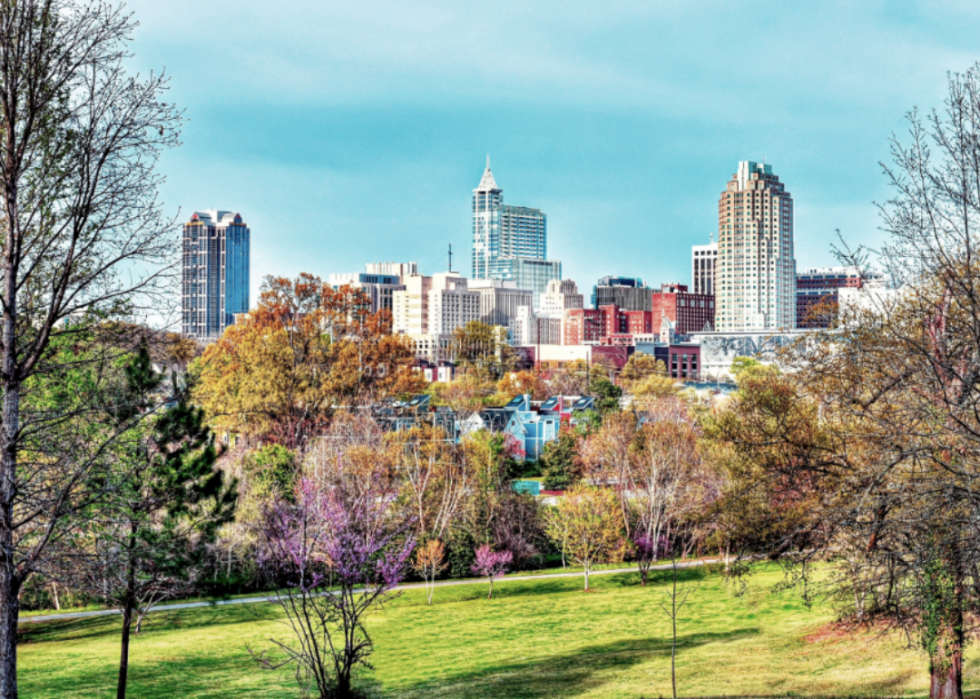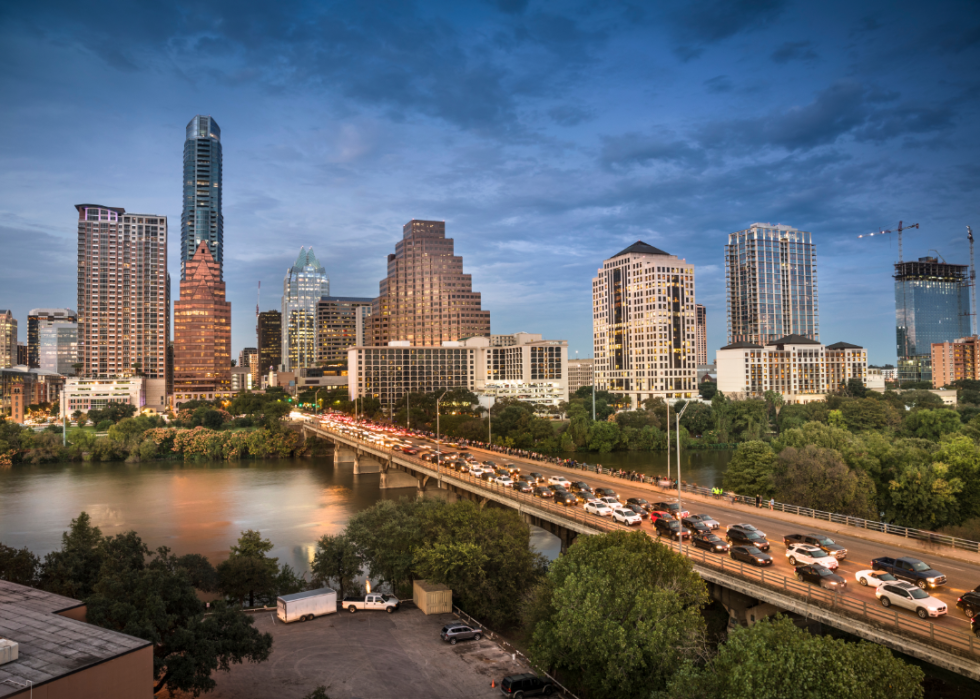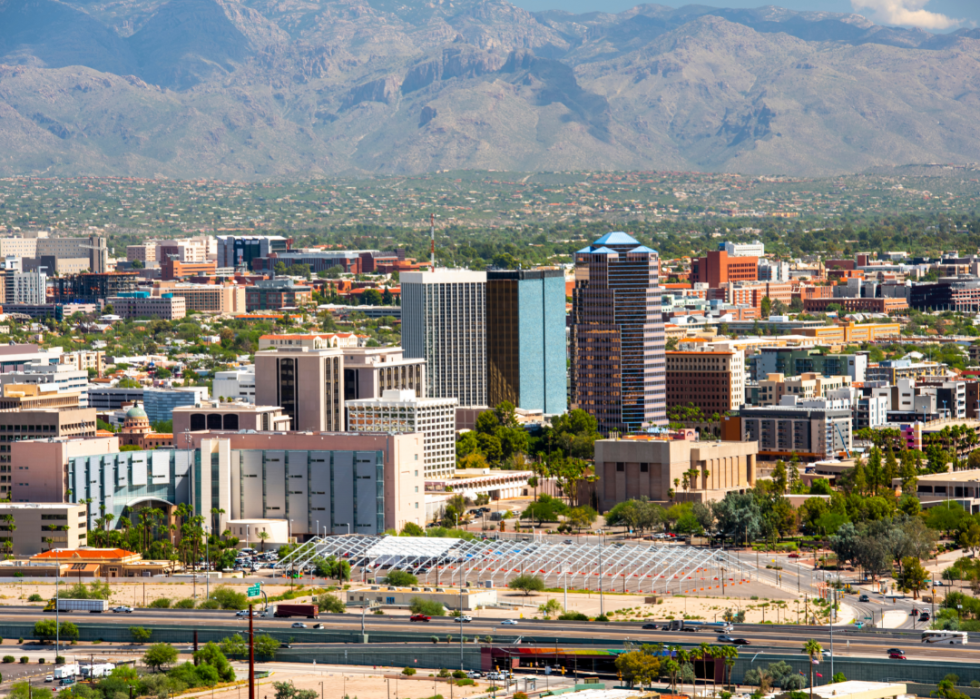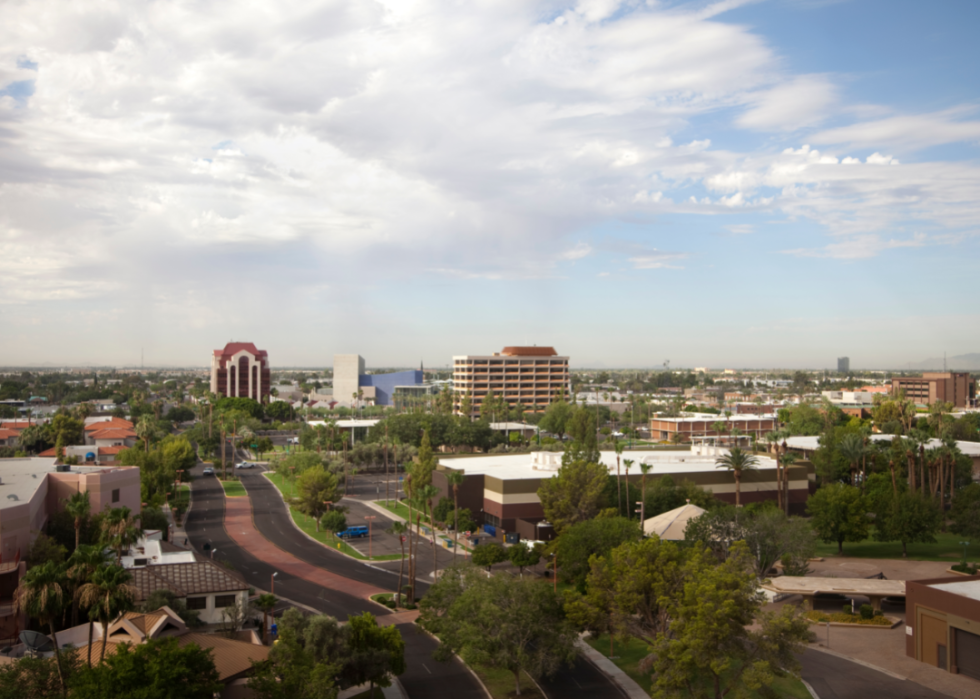
Cities where rents have increased the most
Lockdowns during the COVID-19 pandemic made many renters realize they could pick up and move to a place where they could get more bang for their buck, but the ramifications of the global health crisis didn't stop there.
Months-long wait times for common building materials, supply chain issues, more expensive building products, and a need for workers are among the various pandemic-related factors that have contributed to the delay in housing development. This stagnation also plays an important role in why rents are higher today, with rents having spiked 15.3% year over year across the country. This is particularly evident in the Sun Belt—which includes Florida, Arizona, and Texas—where the biggest rent increases are, as more people move to warmer climates.
Stacker examined May 2022 data from the rental platform Apartment List to see which major cities have recorded the biggest year-over-year rent increases. To be included in the analysis, the city had to have at least 350,000 residents. In the event of a tie, the percentage change from the previous month was used.
Read on to see if your city is experiencing a surge in rental prices.

#10. Raleigh, North Carolina
- Median rent for a one-bedroom apartment: $1,270
- Median rent for a two-bedroom apartment: $1,445
- Change from May 2021: 20.9%
Although Raleigh's rents dipped at the end of 2021, they've risen again. Would-be homebuyers who have been priced out of Raleigh's skyrocketing real estate market are continuing to rent, which creates a lack of supply and increases average rents. While Raleigh's rents are rising, they're still affordable compared to other large cities around the country.

#9. Nashville, Tennessee
- Median rent for a one-bedroom apartment: $1,286
- Median rent for a two-bedroom apartment: $1,448
- Change from May 2021: 21.5%
Big Tech companies like Oracle and Amazon are among the employers fueling job growth in Nashville. More good jobs in the city also fuels population growth, and the housing supply hasn't been able to keep up.
Although the pandemic slowed down real estate development, a number of apartment buildings will be opening up in the coming years, which may ease rent prices.

#8. Austin, Texas
- Median rent for a one-bedroom apartment: $1,455
- Median rent for a two-bedroom apartment: $1,771
- Change from May 2021: 21.5%
From 2010 to 2020, Austin's population exploded by over a half million people to 2.3 million people, due in part to its affordability. Tech companies like Oracle and Tesla relocated their headquarters from Silicon Valley to Austin, while Apple and Google have expanded their Austin offices. Remote workers also arrived from more expensive cities, causing more pressure on the housing market and keeping would-be homeowners in rental situations.
The pandemic also caused rents to fall below market rates, but now that people are moving around again, rental prices are making up for lost time.

#7. Las Vegas
- Median rent for a one-bedroom apartment: $1,113
- Median rent for a two-bedroom apartment: $1,423
- Change from May 2021: 21.9%
Many remote workers moved to Las Vegas from more expensive cities and brought their higher-paying salaries with them. This has allowed them to afford rents that are out of reach to existing residents.
In addition, outside investors and hedge funds have been snapping up properties for sale, which means would-be homebuyers keep renting. As material shortages and other supply chain issues persist, the supply of new housing options has struggled to keep up.

#6. Tucson, Arizona
- Median rent for a one-bedroom apartment: $959
- Median rent for a two-bedroom apartment: $1,262
- Change from May 2021: 21.9%
Nearly half of Tucson's population rents, but there's not enough rental housing supply to keep up with demand, which has caused prices to soar. Several contributing factors are at play, including a focus on single-family home construction versus apartment buildings and the proliferation of apartments being used as short-term or vacation rentals.
Although residents who rent believe price-gouging is at play, state law prohibits limiting how much a landlord can charge for rent. This has put increasing pressure on residents' wallets, even if Tucson is still one of the more affordable cities in Arizona.

#5. Phoenix
- Median rent for a one-bedroom apartment: $1,232
- Median rent for a two-bedroom apartment: $1,490
- Change from May 2021: 23.3%
A prime city in the Sun Belt, Phoenix is considered affordable to those who live outside of the area, which has spurred population growth.
Supply chain and labor issues have led to a housing shortage. In addition, the 2008 housing bubble greatly affected the city, and new construction stopped. While things have resumed, the supply hasn't caught up with demand. This is evident in Phoenix's 2022 rental vacancy rate of just 3%, half of what it normally is.
Investors have also jumped at the chance to own rental property in the area. They have spent more than $13 billion buying up apartments, causing sales prices—and rents—to jump.

#4. Mesa, Arizona
- Median rent for a one-bedroom apartment: $1,290
- Median rent for a two-bedroom apartment: $1,488
- Change from May 2021: 24.9%
While rents in Mesa have climbed sharply, single-family homes have increased even more: The average sale price of a home is 55% higher in 2022 compared to 2020. This has kept would-be buyers in their rentals and shrunk the supply of rental units.
Also fueling rents is an influx of investor dollars. In November 2021, investors snapped up three apartment complexes in Mesa for more than $354.5 million, betting that the city's high population growth will translate to higher rents.

#3. Miami
- Median rent for a one-bedroom apartment: $1,568
- Median rent for a two-bedroom apartment: $2,078
- Change from May 2021: 26.6%
The pandemic has fueled a massive rent increase across Miami as remote workers—particularly New Yorkers—flocked there for better weather, lower taxes, and fewer pandemic restrictions.
Armed with higher incomes in a rental market that seems cheap by comparison, renters who are looking in desirable neighborhoods are starting to offer more than what landlords are asking, which drives up prices in some areas.
In response, Miami-Dade County enacted a law in March 2022 that requires landlords to provide at least 60 days' notice if a tenant's rent will increase more than 5%, and extends the eviction notice period from 30 to 60 days.

#2. Tampa, Florida
- Median rent for a one-bedroom apartment: $1,419
- Median rent for a two-bedroom apartment: $1,751
- Change from May 2021: 27.6%
A growing population has caused Tampa's rental rates to spike and vacancy rates to plummet to an all-time low of 4.4%. More renters are choosing to live on their own, which also exacerbates the amount of housing supply.
The supply levels aren't due to increase anytime soon. The housing bubble hit Florida hard, and development hasn't grown enough since then to meet the current needs.

#1. New York
- Median rent for a one-bedroom apartment: $1,956
- Median rent for a two-bedroom apartment: $2,066
- Change from May 2021: 31.8%
Nearly 4% of New Yorkers fled the city during the pandemic, eager for space and affordability. Rents plummeted to all-time lows in 2021, and renters enjoyed a temporary reprieve from the city's legendary high rents.
With the pandemic entering a less acute phase, people are returning to the city as jobs open up, workers go back to the office, and remote learning ends. This has caused rents to rebound, particularly in wealthier neighborhoods, as landlords try to make up for lost income and deal with higher costs.



